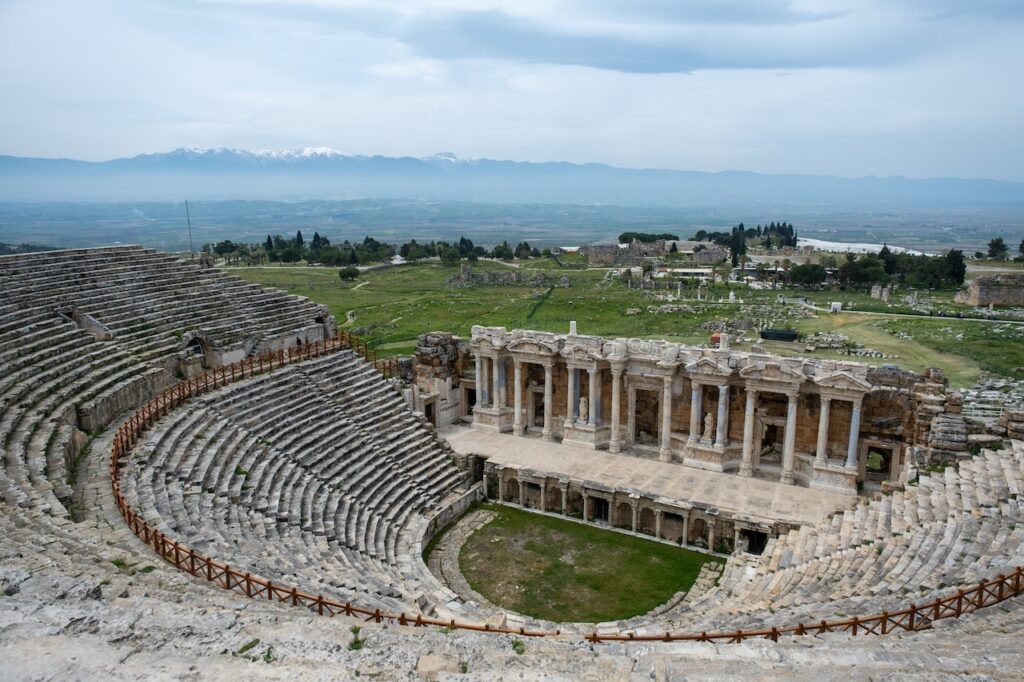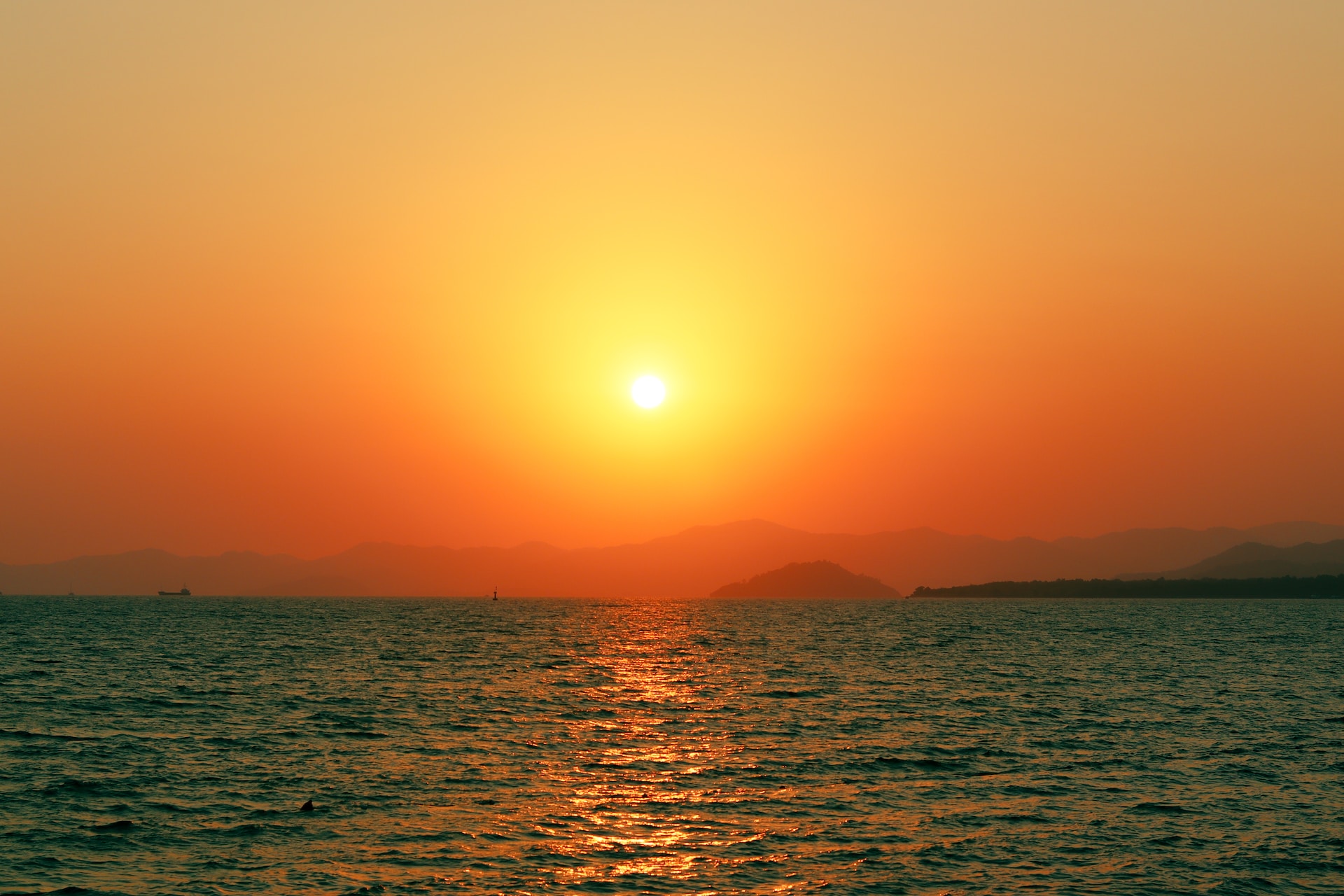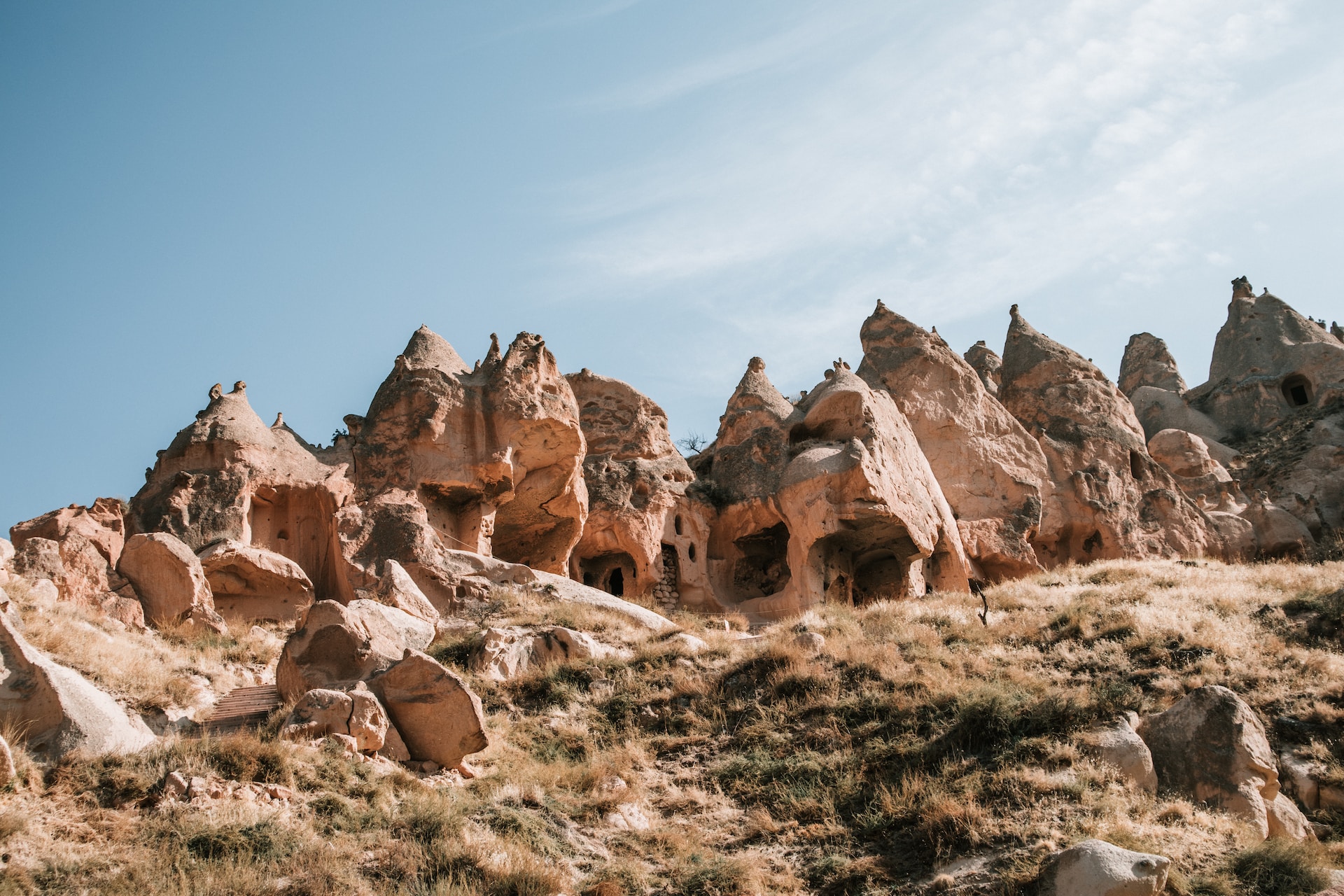Pamukkale, a breathtaking natural wonder located in southwestern Turkey, has captivated visitors for centuries with its ethereal beauty and rich historical significance. Meaning “Cotton Castle” in Turkish, Pamukkale is famous for its gleaming white terraces formed by mineral-rich thermal waters cascading down the slopes. This geological marvel, coupled with the nearby ancient city of Hierapolis, makes Pamukkale a unique and multifaceted destination that combines natural beauty with historical grandeur. In this article, we will delve into the mesmerizing allure of Pamukkale, exploring its geology, history, and the experiences it offers to visitors.
Geological Formation and Unique Features
Pamukkale’s striking terraces are the result of thousands of years of geological processes. Underground volcanic activity has given rise to thermal springs that are rich in calcium carbonate. As the hot mineral-rich waters rise to the surface, they cool and deposit calcium carbonate, forming the dazzling white terraces that cascade down the hillside. The terraces, resembling giant cotton-like formations, are constantly evolving due to the continuous flow of water.
Apart from the terraces, Pamukkale also boasts other unique features. The Hierapolis-Pamukkale landscape has been recognized as a UNESCO World Heritage site since 1988. The region is home to numerous hot springs, waterfalls, and travertine terraces, which create a visually stunning and tranquil environment. The terraces, in particular, have an otherworldly appearance, with their shimmering blue pools of mineral-rich water contrasting against the brilliant white landscape.
Historical Significance of Hierapolis
Pamukkale’s allure is not limited to its natural beauty. Adjacent to the terraces lies the ancient city of Hierapolis, which was once a thriving Greco-Roman city and an important center for culture, religion, and trade.

Founded in the 2nd century BC, Hierapolis flourished under various civilizations, including the Greeks, Romans, and Byzantines. The city’s strategic location along trade routes brought prosperity and cultural exchange. Over time, Hierapolis became renowned for its healing thermal waters, attracting visitors seeking medicinal and therapeutic benefits.
One of the prominent features of Hierapolis is the well-preserved ancient theater. Built during the reign of Emperor Hadrian in the 2nd century AD, the theater has a seating capacity of around 12,000 people and served as a venue for various performances, including theatrical plays and musical events.
Another notable attraction in Hierapolis is the Necropolis, a vast ancient cemetery that spans several kilometers. The Necropolis is a testament to the city’s diverse cultural influences, with tombs and sarcophagi reflecting different architectural styles, including Hellenistic, Roman, and Anatolian. Among the tombs, the impressive Martyrium of St. Philip stands out—a structure dedicated to the Apostle Philip, who was believed to be martyred in Hierapolis.
Hierapolis also houses a unique archaeological museum, showcasing artifacts excavated from the site. Visitors can explore a wide range of artifacts, including statues, pottery, and mosaics, providing insights into the daily life, art, and religious practices of the ancient inhabitants.
Experiences and Preservation Efforts
Visiting Pamukkale offers a range of unforgettable experiences. Tourists can wander barefoot on the terraces, enjoying the sensation of walking on the warm, mineral-rich waters while marveling at the extraordinary landscape. The thermal waters are known for their healing properties, and visitors can take a dip in the designated pools, which offer relaxation and rejuvenation. To preserve the natural wonder and its historical treasures, certain areas of the terraces are protected, and visitors are required to follow designated paths. This helps minimize the impact of tourism and ensures the sustainability of Pamukkale for future generations.
Additionally, the site authorities have implemented conservation measures to safeguard Pamukkale. These include controlling water flow and limiting human intervention in the formation of the terraces. Measures have also been taken to prevent the negative effects of tourism, such as restricting the use of chemicals and footwear on the terraces.
Pamukkale is a true marvel of nature, offering visitors a unique blend of geological wonder and historical significance. The gleaming white terraces, cascading thermal waters, and the ancient city of Hierapolis create an awe-inspiring destination that has attracted travelers for centuries. Whether it’s exploring the rich history, soaking in the healing waters, or simply admiring the surreal beauty of the landscape, Pamukkale is an enchanting place that leaves a lasting impression on all who visit.


